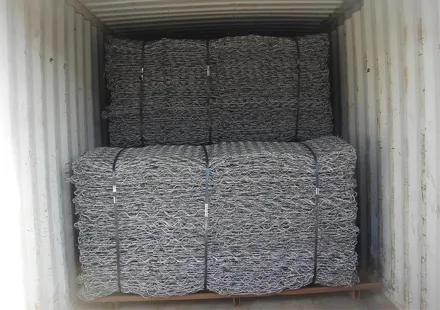dec . 03, 2024 21:13 Back to list
Iron Nail Production Processes and Techniques for Efficient Manufacturing
The Manufacturing Process of Iron Nails
Iron nails are essential components in construction, woodworking, and various crafts, serving as reliable fasteners for a wide range of materials. The manufacturing of iron nails involves several steps, from raw material procurement to the final product, ensuring quality and efficiency. In this article, we will explore the entire process of iron nail manufacturing, including the materials used, the techniques involved, and the importance of quality control.
Raw Materials
The primary raw material for iron nail production is iron, which can be sourced from iron ore. The iron ore undergoes several processes to eliminate impurities, resulting in pure iron or iron alloys. Additionally, scrap metal is often used in the production process, combining recycled materials with new iron to create cost-effective and sustainable products. The choice of material is crucial, as it influences the strength, durability, and corrosion resistance of the final product.
Manufacturing Processes
The manufacturing of iron nails typically involves the following steps
1. Melting The first step is melting the iron ore or scrap metal in a furnace. Modern manufacturers often use electric arc furnaces, which efficiently melt the metal using high temperatures. This process allows for precise control of the metal composition and ensures the removal of impurities.
2. Forming Once the iron is molten, it is cast into ingots or billets. These forms are then heated and fed into a nail-making machine. The machine employs various forming techniques, such as forging or stamping, to shape the metal into nail forms. During this process, nails are precisely cut to predetermined sizes, making mass production feasible.
3. Cold Heading In cold heading, the shaped iron pieces are further processed without heating. This technique increases the density and strength of the nails through deformation. The cold heading process is critical, as it enhances the mechanical properties of the nails and improves their overall performance.
4. Pointing and Shaping After cold heading, the nails undergo a pointing process, where the tip is shaped to facilitate easy penetration into wood or other materials. This process can involve grinding or additional forming to create sharp, precise points. The head of the nail is also refined during this stage to ensure proper seating when driven into materials.
iron nail manufacture

5. Heat Treatment To enhance the mechanical properties of the nails, they are often heat-treated. This process involves heating the nails to a specific temperature followed by rapid cooling. Heat treatment improves the nails' strength, ductility, and resistance to corrosion, making them suitable for a variety of applications.
6. Finishing The final steps include surface treatment and finishing. Nails may receive coatings, such as zinc plating, to enhance corrosion resistance and durability. Additionally, nails may be polished or cleaned to remove any impurities or oxides that formed during previous processes.
Quality Control
Quality control is a critical aspect of iron nail manufacturing. Throughout the production process, various checks are performed to ensure that the nails meet industry standards and customer specifications. These checks can include
- Material Testing Testing the raw materials for chemical composition and mechanical properties to guarantee they meet required standards. - Dimensional Inspection Measuring the finished nails for size and shape to ensure they conform to specifications. - Performance Testing Conducting tests to evaluate the mechanical strength and resistance of nails under various conditions.
Environmental Considerations
The manufacturing process of iron nails also considers environmental sustainability. Manufacturers are increasingly adopting practices that minimize waste, reduce energy consumption, and use recycled materials. Utilizing scrap metal for nail production not only lowers costs but also contributes to a more sustainable manufacturing model.
Conclusion
The manufacturing of iron nails is a complex but efficient process that combines advanced technology with traditional techniques. From raw material sourcing to quality control, each stage is vital in producing reliable and durable nails suitable for various applications. As the demand for construction materials grows, iron nail manufacturers continue to innovate, focusing on efficiency, sustainability, and quality to meet the needs of the market. As consumers, understanding this process not only enhances our appreciation for these simple yet essential fasteners but also raises awareness about the importance of manufacturing practices in our economy.
-
Reliable Nails for Every Construction Project
NewsJun.10,2025
-
Reliable Iron Nails for Every Project
NewsJun.10,2025
-
Razor Wire Solutions for Enhanced Security
NewsJun.10,2025
-
Hydraulic Hose Ferrule Fittings: Key to a Strong Hydraulic System
NewsJun.10,2025
-
Field Fencing: Secure Your Property with the Best Solutions
NewsJun.10,2025
-
Euro Fences: The Ultimate Choice for Security and Style
NewsJun.10,2025









